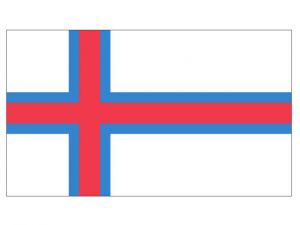Language/Faroese/Grammar/Present-Tense
Introduction
In this lesson, you will learn how to form the present tense of Faroese verbs, including regular and irregular verbs. The present tense is used to describe actions that are currently happening or habits that occur regularly. It is an essential part of Faroese grammar that will help you communicate effectively in everyday situations.
Present Tense
In Faroese, the present tense is formed by adding an ending to the stem of the verb. The endings vary depending on the subject and whether the verb is regular or irregular.
To find the stem of a verb, remove the -a ending from the infinitive form of the verb. For example:
- Hevja (to have) becomes hevj-
- Fara (to go) becomes far-
- Lesa (to read) becomes les-
Regular Verbs
Regular verbs follow a pattern in their conjugation, which makes them relatively easy to learn. To form the present tense of a regular verb, add the appropriate ending to the stem of the verb. The endings for regular verbs are:
| Subject | Ending |
|---|---|
| eg (I) | -i |
| tú (you singular) | -ar |
| hann/hon/tað (he/she/it) | -ar |
| vit (we) | -a |
| tygum (you plural) | -a |
| tey (they) | -a |
Here is an example of the present tense conjugation of the regular verb lesa (to read):
| Subject | Present Tense |
|---|---|
| eg | lesi |
| tú | lesar |
| hann/hon/tað | lesar |
| vit | lesa |
| tygum | lesa |
| tey | lesa |
As you can see, the -i ending is added for the first person singular, -ar for the second and third person singular, and -a for all plural subjects.
Irregular Verbs
Irregular verbs do not follow the regular pattern in their conjugation and require memorization. Here are some common irregular verbs that you should know:
- Vera (to be)
- Kunna (to know)
- Má (to be allowed to)
- Skal (to have to)
- Vilja (to want)
Here is an example of the present tense conjugation of the irregular verb vera (to be):
| Subject | Present Tense |
|---|---|
| eg | eri |
| tú | ert |
| hann/hon/tað | er |
| vit | eru |
| tygum | eru |
| tey | eru |
As you can see, the present tense forms of vera are completely irregular.
Practice
Now that you have learned how to form the present tense of Faroese verbs, it's time to practice with some examples.
- Eg lesur bókina. (I am reading the book.)
- Hann fær nýtt hús. (He is getting a new house.)
- Tey fara í skúlan. (They go to school.)
- Vit hava góðan dag. (We have a good day.)
- Tygum taka ímóti gjestum. (You plural receive guests.)
- Verður tað gott veður í morgin? (Will the weather be good tomorrow?)
Try to form your own sentences using regular and irregular verbs in the present tense.
Cultural Insight
Faroese is a language with a rich history, culture, and traditions. In the Faroe Islands, the language is considered one of the essential components of national identity.
Faroese is closely related to Icelandic and has been influenced by the Norse language spoken by the Vikings who settled on the islands in the 9th century. Today, Faroese is spoken by approximately 50,000 people, mainly in the Faroe Islands but also by Faroese expatriates around the world.
Historically, the Faroe Islands were part of the Kingdom of Denmark, and Faroese was not officially recognized as a language until 1948. Since then, efforts have been made to preserve and promote the language, including the establishment of language schools and immersion programs for children.
Faroese music, literature, and art are also significant parts of the culture, providing a window into Faroese life, traditions, and history. Ballads, for example, are an ancient storytelling tradition that has been passed down from generation to generation, evolving over time to reflect changes in society and the environment.
Understanding the Faroese language can open the door to a fascinating and unique culture that is rooted in centuries of history and tradition.

